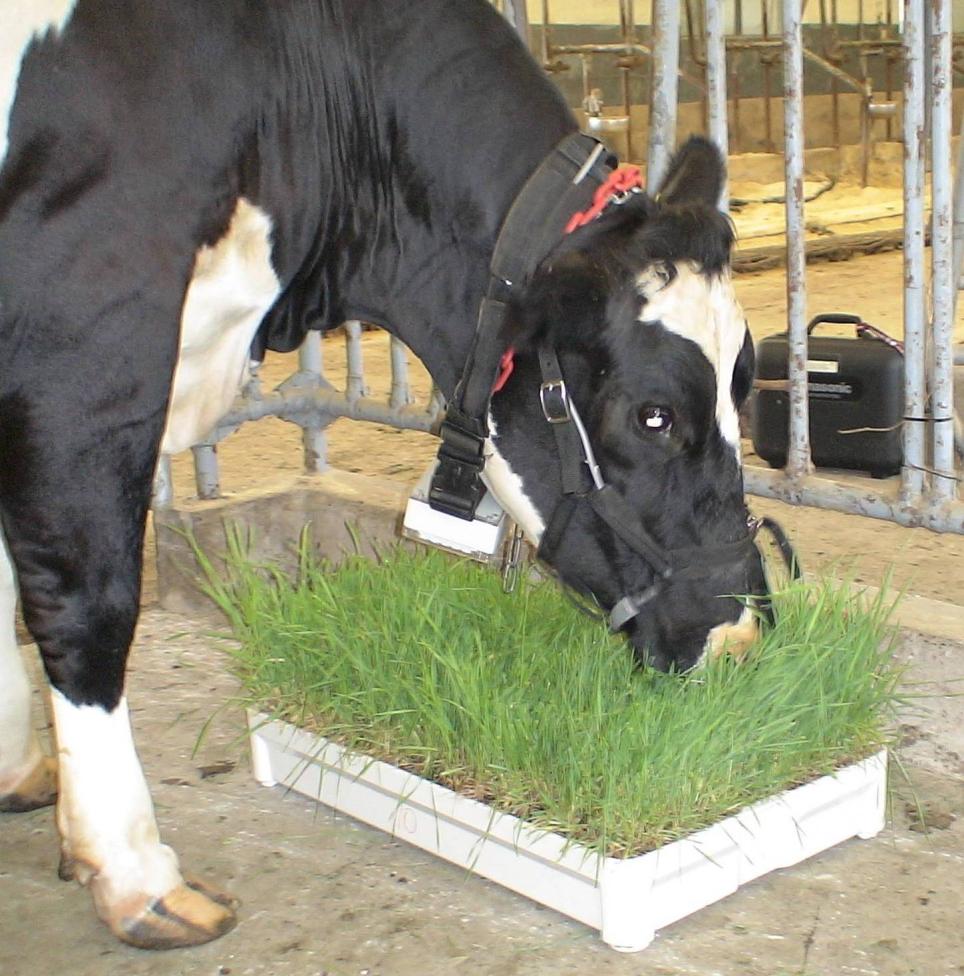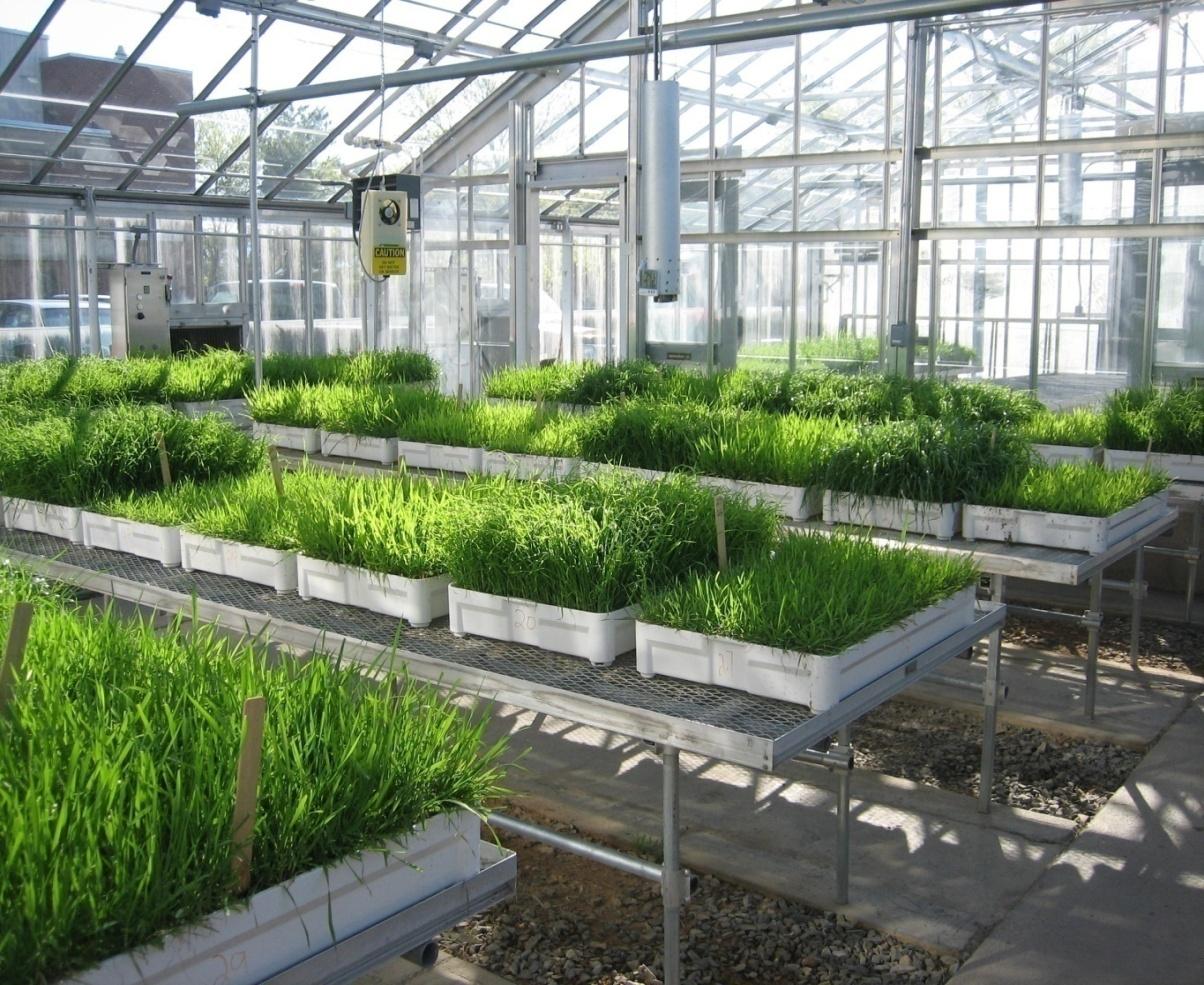Does sward structure affect bite mass of grazing cattle?
Dr. Kathy Soder, USDA ARS Pasture Systems and Watershed Management
Research Unit)
Summary¶
Dry matter intake (DMI) is a key factor for animal performance in pasture-based systems. While pasture DMI depends greatly on forage quality and availability, forage accessibility is also important and can be influenced by:
- Sward structure (height, bulk density, herbage mass)
- Forage species (some forage species are more erect, while others are more ‘hidden’ in the canopy)
We evaluated the effects of sward structure and forage species (orchardgrass, meadow fescue, quackgrass or reed canarygrass) on bite mass of dairy cows in short-term grazing experiments.
We found that, in the context of our experiment, bite mass was not affected by forage species. However, bite mass was impacted by sward structure, specifically sward height and bulk density.
[
Background¶
We were interested whether sward structure or forage
species affected pasture DMI through grazing
behavior, where:
DMI = Grazing Time * Biting Rate * Bite Mass
-
Grazing Time = the time spent grazing
-
Biting Rate = number of bites harvested per minute
-
Bite Mass = amount of forage harvested per bite.
While grazing time and biting rate can be manipulated to some degree by grazing management, bite mass may have the most potential to be manipulated to improve DMI and animal production.
The Experiment¶
Cows were offered one of the four grasses planted in experimental microsward boxes over two years. In 2006, the seeding rate was high to mimic previous work, while in 2007 the seeding rate was reduced to more closely mimic pastures in the Northeast.
Boxes were weighed before and after each grazing session. The number of bites taken was recorded. Bite mass was calculated by dividing the number of bites taken by the total weight loss of the box. Sward measurements (herbage mass, bulk density, tiller length, tiller density) were collected to evaluate sward structure.
Results¶
Bite mass was not affected by forage species, indicating that, within the scope of this experiment, forage species had little influence on the decisionmaking process. The cattle were able to adjust their bite patterns to maintain a similar bite mass across forage species, despite differences in sward structure (sward height and density). Bite mass was affected by year; taller, denser swards in 2006 resulted in greater bite masses than in 2007.
[
Practical Implications¶
Cool-season grass species have very different growth patterns. For example, orchardgrass is a tall bunchgrass with much of its leaf structure high in the canopy, while quackgrass is a denser, lower-growing forage.
Combining forage species with different sward structures could result in a leafy canopy with high nutritive value from top to bottom. This would result in the animal being able to obtain a similar bite mass of relatively high nutrition throughout the entire grazing session. This could lead to greater nutrient intake and less grazing time (less searching for each bite), thereby expending less energy on grazing activity which then could be diverted to greater animal production.
This relatively inexpensive research tool provides an opportunity to begin understanding the impact that the pasture forage has on grazing behavior. We need greater knowledge of the plant-animal interactions at the bite level in order to eventually scale up to meals and daily behavior to improve pasture management and animal productivity. This knowledge will also help overcome factors that limit DMI, particularly for high-producing animals such as lactating dairy cows.
Conclusions¶
Based on the results of this study, forage species did not affect bite mass. Rather, generic sward features such as sward height, bulk density and herbage mass had greater influence on bite mass as evidenced by the differences in bite mass between years.
Maintaining a dense sward from the bottom to the tip of top of the
canopy may result in greater grazing efficiency, with the potential to
increase animal production. In practice, sward surface height is
frequently used as a practical tool to evaluate intake potential of
pastures. While emphasizing the importance of maintaining high
availability of high-quality pasture to optimize DMI of grazing
ruminants, current grazing management studies may need to evaluate
factors other than sward surface height such as green leaf availability
or adaptation mechanisms by the animal that influence grazing
behavior.